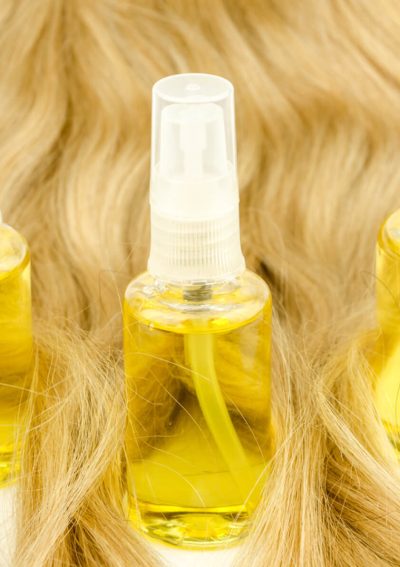Nonchemical Hair Relaxer
Using chemical hair straightening products may have negative health effects, including a heightened risk of uterine cancer. Choosing a nonchemical hair relaxer to avoid potential toxic exposure means weighing practical concerns against aesthetic preferences.

Why Choose Nonchemical Hair Relaxers?
People interested in straightening their hair are choosing nonchemical hair relaxers because of growing investigations into health issues with chemical straighteners, indicating they are potentially harmful products.
While plenty of information exists on nonchemical hair relaxer and straightener techniques, the discussion isn’t as simple as it may be for other types of beauty and hygiene products. The use of chemical straighteners — and hair straightening in general — might even be part of a larger system of discrimination in the workplace, depending on the situation.
| Nonchemical Hair Relaxing | Chemical Hair Relaxing | |
| Application | Involve applying heat, a cream or oil to the hair | Tend to be more complex and may call for protective creams, even applications, precise timing and multiple stages and materials |
| Duration of Effect | Vary in duration but most tend to be temporary | Often permanent, lasting until hair grows out |
| Effectiveness and Effects | A variety of possible straightening and relaxing effects, depending on the method and technique | Different effects possible using different methods, changing dwell times of chemicals and using other techniques |
| Materials | Many nonchemical hair relaxers use heat or high-quality oil, silicone or keratin. | There are a variety of chemical straightening formulas, typically including a substance with high (basic as opposed to acidic) pH. |
| Side Effects | Depending on the technique and material, might leave hair oily or cause heat damage | Could cause skin and hair damage if the person applying them mishandles the substances; also a possible link between some straighteners and higher risk for certain types of cancers |
| Skin sensitivity | Generally don’t cause skin issues unless a person is sensitive to a specific product or ingredient (allergies, for example) | Could irritate sensitive skin, though there are chemical formulations marketed specifically to people with this issue |
Hair is more than fashion. Hair straightening touches on topics of chemistry, culture, health and aesthetics. It can be about a person’s identity, autonomy, culture and potentially survival.
Chemical relaxers may cause more harm than scalp and hair damage. Knowledge of the differences between chemical hair straighteners and nonchemical relaxer for natural hair is important when deciding on options.
Benefits of Nonchemical Hair Relaxers
Nonchemical relaxers are often gentler and easier to apply than chemical alternatives, and they are also potentially safer. Some benefits are specific to certain skin types, while others could be a matter of preference. For example, natural techniques don’t typically contain potentially toxic chemicals or cause any of the potential chemical hair straightener effects.
Heat, oil, silicone and keratin straightening provide options for straight or relaxed hair styles. While excessive heat treatment could damage hair, using natural products and techniques rather than chemical relaxers could offer long-term benefits. Studies show a potential link between increased risk of cancer and some chemical straightening products.
Chemical straighteners often need professional application to avoid damage and chemical burns. Oils and many other natural relaxers, on the other hand, moisturize the scalp and hair.
Many people who used chemical products and experienced serious injuries are filing chemical hair straightener lawsuits. Plaintiffs are seeking compensation to cover medical treatments and lost wages.
Types of Nonchemical Hair Relaxers
There are two main categories of nonchemical hair relaxing techniques: Using nonchemical products and treating with heat. These techniques may overlap. For instance, someone might use a straightening iron and then apply an oil mask for conditioning and additional relaxing effect.
Consumers should be aware when shopping for nonchemical hair relaxers that the marketing language on product packaging or advertisements can be confusing. For example, if a manufacturer advertises the product as “lye free,” that doesn’t necessarily mean that the product is free of other straightening chemicals.
- Heat: Heat irons pass hair between two heated plates several times to straighten it.
- Keratin: Chemical-free keratin is a long-lasting, professional treatment.
- Oil: People typically apply warmed oil to their hair and let it sit under a towel before washing it out.
- Silicone: Silicone is a polymer and not a natural product, but these short-term straighteners typically don’t have the same components as standard chemical relaxers.
The distinction between chemical and nonchemical relaxers isn’t always clear. Any other ingredients on a product package call for further research. With a technique such as oil straightening, the only requirements should be the oil, a towel, shampoo, water and potentially a way to heat the oil to a safe temperature before application.
How Do Nonchemical Hair Relaxers Work?
A nonchemical hair relaxer product typically adds oils or proteins to condition hair, allowing people more freedom with styling, rather than straightening it directly. The key is for the oil or protein to penetrate the entire strand of hair.
Wet, untreated natural hair tends to regain volume and curl up when it dries, even if it dries when wrapped in a towel. Treated hair, on the other hand, is more likely to hold its shape.
The other main nonchemical relaxer for natural hair is heat. Heat treatments break certain chemical bonds, simultaneously pulling and heating hair. These chemical bonds can form again in humid conditions, causing the hair to regain some of its natural waves and curls.
Tips for Choosing a Nonchemical Hair Relaxer
The best nonchemical hair relaxer for you depends on your individual needs. This is about more than the final look; it’s about style, culture and autonomy.
- Calculate the budget for straightening, because some techniques can be costly at professional salons.
- Determine where the natural relaxing process fits into your hygiene and beauty routine. Some techniques require more frequent applications than others.
- Set goals about the desired look. Many natural products don’t create completely flat hair.
- Smell and feel the treated hair. Examine the look in different lights and weather. This helps assess the best fit for you.
- Test products in small applications for skin or hair sensitivity, especially formulations with unfamiliar ingredients.
Choosing a nonchemical hair relaxer can be more complicated than simply picking a jar on a beauty supply store’s shelf. But for many concerned about potential negative health effects from chemical products, the time spent finding a nonchemical solution can be worth the effort.
4 Cited Research Articles
Consumernotice.org adheres to the highest ethical standards for content production and references only credible sources of information, including government reports, interviews with experts, highly regarded nonprofit organizations, peer-reviewed journals, court records and academic organizations. You can learn more about our dedication to relevance, accuracy and transparency by reading our editorial policy.
- ACS Medical Content & News Staff. (2022, October 26). Study finds possible link between hair straightening chemicals and uterine cancer. Retrieved from https://www.cancer.org/cancer/latest-news/study-finds-possible-link-between-hair-straightening-chemicals-and-uterine-cancer.html
- Chang, C. et al. (2022, October 17). Use of Straighteners and Other Hair Products and Incident Uterine Cancer. Retrieved from https://academic.oup.com/jnci/article/114/12/1636/6759686
- Nathache Hatsbach de Paula, J., Machado Alves Basílio, F. & Andrade Mulinari-Brenner, F. (2022, January 17). Effects of Chemical Straighteners on the Hair Shaft and Scalp. Retrieved from https://www.sciencedirect.com/science/article/pii/S0365059621003147
- Coogan, P. F. et al. (2021). Hair product use and breast cancer incidence in the Black Women’s Health Study. Retrieved from https://academic.oup.com/carcin/article/42/7/924/6278856
Calling this number connects you with a Consumer Notice, LLC representative. We will direct you to one of our trusted legal partners for a free case review.
Consumer Notice, LLC's trusted legal partners support the organization's mission to keep people safe from dangerous drugs and medical devices. For more information, visit our partners page.
866-461-6220
